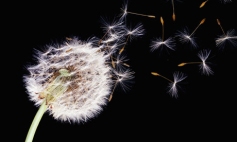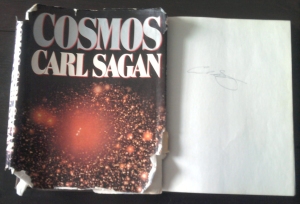Title: Brian Cox’s Wonders of the Universe
Cost: 6.99
Platform: iPad 2 and higher with iOS 5 or higher
“Wonders of the Universe, a new app from the BBC, HarperCollins, and Professor Brian Cox, takes you zooming through our universe, from a broad view at multiple galaxies all the way down to a look at subatomic particles–with more than a film’s worth of videos, a staggering amount of gorgeous space photos, and hundreds of interesting articles as well. It takes the idea of an interactive textbook far beyond what we’ve seen before.” — from Wonders of the Universe App Is Your Space Textbook of the Future
In previous App of the Week posts I’ve talked about how librarians will want to start thinking about and looking at apps as a part of their non-fiction and textbook collections. Brian Cox’s Wonders of the Universe is a perfect example of this. The app is filled with lots of good text-based information. But, beyond that, it includes many videos in which Cox discusses and demonstrates concepts covered in the app. For visual and auditory learners these videos, along with the high-quality images, will surely help increase understanding of the universe. The screencast below provides an overview of the app’s impressive user interface and content.
You can read more YALSA App of the Week posts by visiting the App of the Week Archive.







The very first episode of Cosmos should have hooked anybody:
“We will encounter galaxies and suns and planets, life and consciousness coming into being, evolving and perishing. Worlds of ice and stars of diamond, atoms as massive as suns and universes smaller than atoms … The surface of the Earth is the shore of the cosmic ocean. From it, we have learned most of what we know. Recently, we have waded a little out to sea, enough to dampen out toes or, at most, wet our ankles. The water seems inviting. The ocean calls. Some part of our being knows this is from where we came. We long to return.”
Here was a scientist who was also a poet – a slightly cheesy poet maybe, but definitely a great communicator of “awesome” ideas.
 Cosmos was a TV series first transmitted in the UK at the start of the 1980s. Sagan’s definition was “The Cosmos is all that is or was or ever will be” so it had quite a wide remit. In the show, the American professor traversed the Cosmos in his “spaceship of the imagination”, a dandelion seed that he would blow on – the next moment he was inside, hair streaming in a non-existent breeze, hands waving over multi-coloured controls while he quoted from the Encyclopedia Gallactica. In this remarkable vessel Sagan traversed the universe, past and present. Readers of Johnny Mackintosh should recognize elements of this description and understand that Emperor Bram Khari bears a striking resemblance to the cosmologist from Cornell.
Cosmos was a TV series first transmitted in the UK at the start of the 1980s. Sagan’s definition was “The Cosmos is all that is or was or ever will be” so it had quite a wide remit. In the show, the American professor traversed the Cosmos in his “spaceship of the imagination”, a dandelion seed that he would blow on – the next moment he was inside, hair streaming in a non-existent breeze, hands waving over multi-coloured controls while he quoted from the Encyclopedia Gallactica. In this remarkable vessel Sagan traversed the universe, past and present. Readers of Johnny Mackintosh should recognize elements of this description and understand that Emperor Bram Khari bears a striking resemblance to the cosmologist from Cornell.
I always felt meeting Sagan was a highlight of my time at Cambridge University. He came to give a talk on the new theory of nuclear winter, the idea of which had come out of studying volcanoes on Mars. Afterwards I spoke to him and he signed by (battered) copy of Cosmos that I’d taken along.

When Brian Cox first started doing his Wonders of the Solar System TV programme I was determined not to like it because I thought nothing could compete with Cosmos, but I quickly changed my mind when I saw how superbly put together Wonders was – not another dumbed down trite computer-graphics-laden programme but something of real substance, and I could see Sagan’s influence shining through. I first met Cox at the Royal Society and we talked about our shared love of Cosmos. Later, in the second series of Wonders, I found it funny to see that the Manchester and CERN professor had carried his battered copy of Cosmos on location and referred to the photograph of the Anasazi rock painting, possibly depicting the supernova of 1054, that he’d first seen on this wonderful TV series from the 1980s.
Sagan didn’t only write and present nonfiction – though we should remember his fact was often far more extraordinary than most made-up traveller’s tales. If you ever saw the Jodie Foster movie











